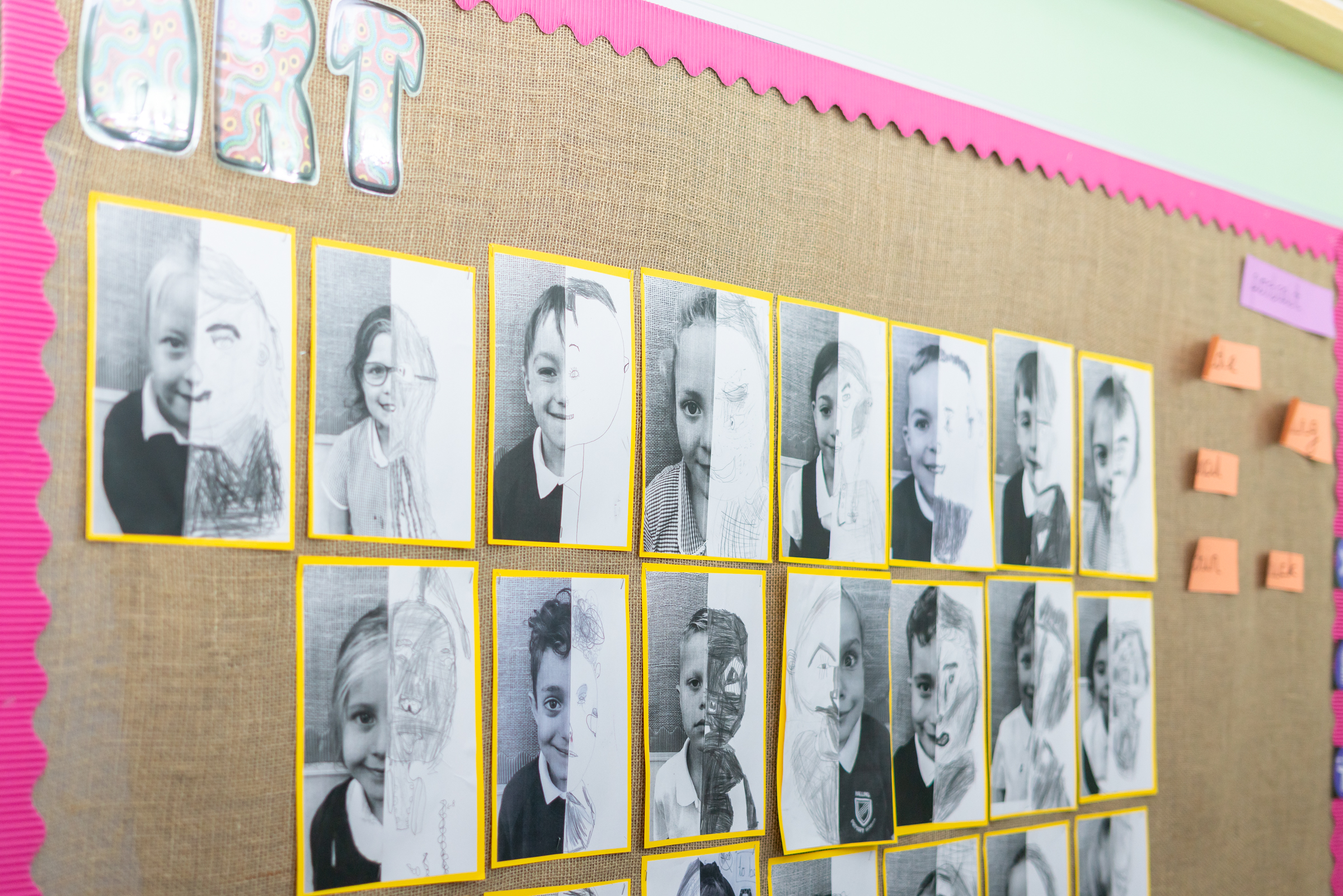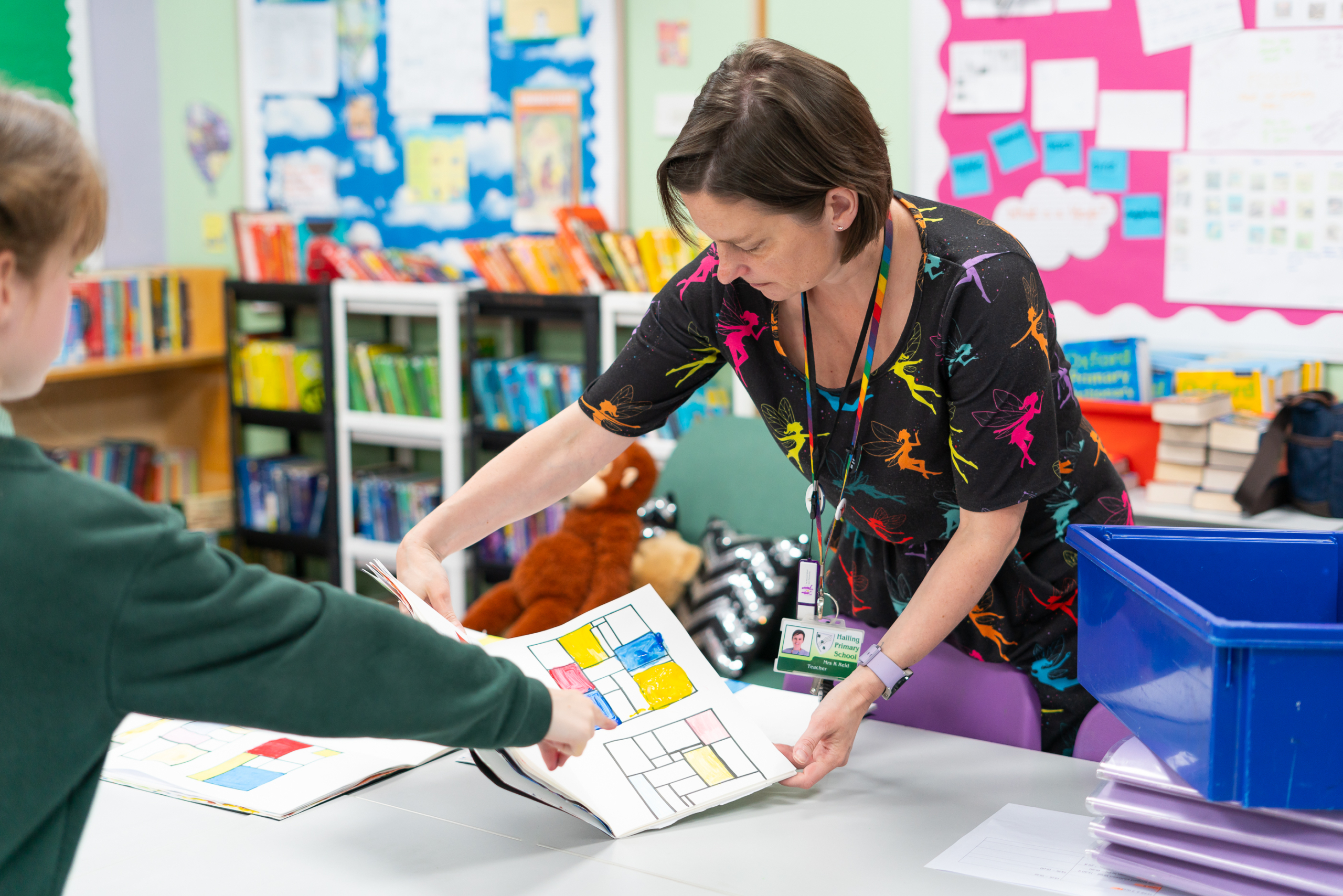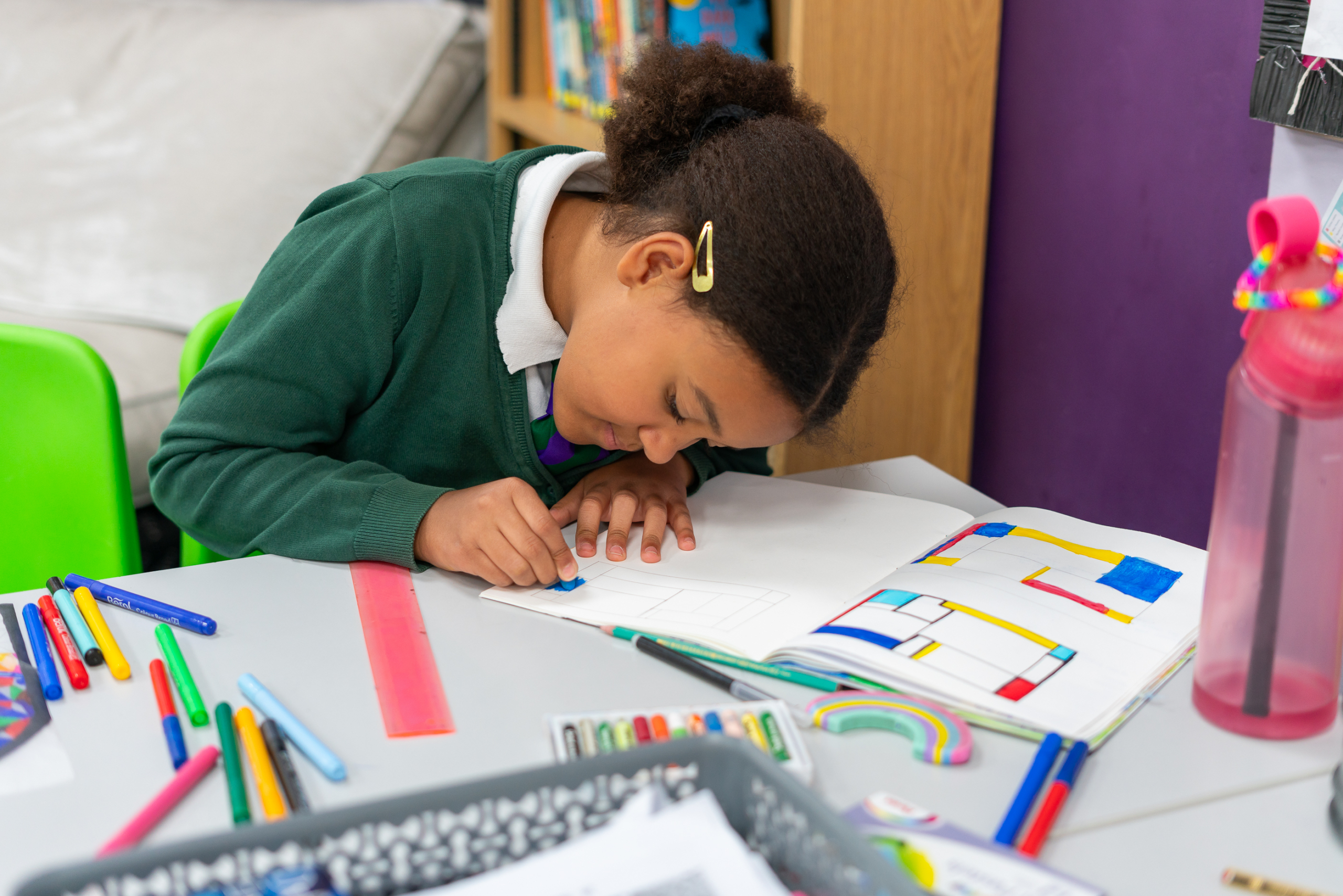Art and Design Subject Leader: Miss H Long and Miss L Edwards
Pupils are given the opportunities to explore their ideas through creative mediums; unleashing their imagination and learning vital skills including drawing, painting and sculpting.
Intent
At Halling Primary School, we believe that art is a vital and integral part of children’s education. Our focus is to develop proficiency in drawing, painting, understanding colour and shade and sculpture, along with developing an understanding and appreciation of different art forms. We offer the opportunity to use a range of materials to explore and create varied forms of art whilst nurturing personal creativity.
The Art curriculum will develop children’s critical abilities, as well as an understanding of their own and others’ cultural heritages through the study of a diverse range of artists. Lessons provide pupils with opportunities to develop a range of ways in which they can share and express their individual creativity, whilst learning about a wide spectrum of different types of art across different periods in history.
We believe we provide an arts curriculum that engages, inspires, and challenges pupils, equipping them with the knowledge, skills and confidence to experiment, invent and create their own works of art. Evaluating and reflecting on their own work, and that of artists and their peers, will allow pupils to become more independent artists who appreciate, respect and find motivation in the work of others.


Implementation
The skills and knowledge that children will develop throughout each art topic are mapped across each year group and are progressive throughout the school. The emphasis on knowledge ensures that children understand the context of the artwork, as well as the artists that they are learning about and being inspired by. This enables links to other curriculum areas, including humanities, with children developing a considerable knowledge of individual artists, as well as individual works and art movements. A similar systematic approach to the development of artistic skills means that children are given opportunities to express their creative imagination, as well as practise and develop mastery in the key processes of art: drawing, painting, printing, textiles and sculpture.
Coordinated whole-school project work ensures that art is given high status in the curriculum. The school’s high-quality Art curriculum is supported through the availability of a wide range of quality resources, which are used to support children’s confidence in the use of different media.
Impact
The structure of the art curriculum ensures that children are able to develop their knowledge and understanding of the work of artists, craftspeople and designers from a range of times and cultures and apply this knowledge to their own work. The consistent use of children’s sketchbooks means that children are able to review, modify and develop their initial ideas in order to achieve high-quality outcomes. Children learn to understand and apply the fundamental principles of art: line, tone, texture, shape, form, space, pattern, colour, contrast, composition, proportion and perspective. The opportunity for children to refine and develop their techniques over time is supported by effective lesson sequencing and progression between year groups. This also helps children in achieving age-related expectations at the end of their cohort year.
Displays reflect the children’s sense of pride in their artwork and creative outcomes across the wider curriculum also demonstrate this. The school environment also celebrates children’s achievements in art and demonstrates the subject’s high status in the school, with outcomes, including sculptures, enhancing the outdoor, as well as the indoor, environment. The Art curriculum contributes to children’s personal development in creativity, independence, judgement and self-reflection.

Art and Design in Each Stage
In EYFS, expressive arts and design encompass the development of children’s artistic and cultural awareness and support their imagination and creativity.
- It is important that children have regular opportunities to engage with the arts, enabling them to explore and play with a wide range of media and materials.
- The quality and variety of what children see, hear and participate in are crucial for developing their understanding, self-expression, vocabulary and ability to communicate through the arts.
- The frequency, repetition and depth of their experiences are fundamental to their progress in interpreting and appreciating what they hear, respond to and observe.
In Years 1 and 2, pupils are taught:
- to use a range of materials creatively to design and make products
- to use drawing, painting and sculpture to develop and share their ideas, experiences and imagination
- to develop a wide range of art and design techniques using colour, pattern, texture, line, shape, form and space
- about the work of a range of artists, craft makers and designers, describing the differences and similarities between different practices and disciplines and making links to their own work.
In Years 3-6, pupils are taught:
- to develop their techniques, including their control and their use of materials, with creativity, experimentation and increasing awareness of different kinds of art, craft and design.
- to create sketchbooks to record their observations and use them to review and revisit ideas
- to improve their mastery of art and design techniques, including drawing, painting and sculpture with a range of materials [for example, pencil, charcoal, paint, clay]
- about great artists, architects and designers in history.
Art and Design Progression
SEND Information
Our SEND and disadvantaged pupils are given the necessary support in class to fully access the supported Art & Design curriculum. Learning is adapted where necessary to support SEND/EAL pupils to give equal opportunities for all to be confident in approaching any problems faced. Interventions, support and challenges are constantly revised and adapted to ensure all children are supported in achieving learning. The above areas are robustly and continuously monitored to ensure any gaps in learning are addressed.

